
Shimla: The Queen of Hills
Discover Shimla, the Queen of Hills, with its colonial charm, scenic beauty, and vibrant local culture. A perfect blend of history, nature, and adventure awaits you.
Shimla, the capital of Himachal Pradesh, is a charming hill station nestled in the Himalayas. Known for its colonial architecture, this city offers a unique blend of history, nature, and culture. The cool climate and scenic beauty make it a popular destination for tourists year-round. The Mall Road in Shimla is the heart of the city, bustling with shops, cafes, and restaurants. Here, you can stroll leisurely while taking in views of the surrounding hills. The Ridge, another iconic spot, offers panoramic views and is a great place to relax and soak in the atmosphere. For those interested in history, the Viceregal Lodge is a must-visit. This grand building once served as the summer residence of the British Viceroy of India. The architecture and well-maintained gardens provide a glimpse into the colonial past of the city. Nature lovers will find solace in the lush green forests and serene landscapes surrounding Shimla. The nearby Kufri area is famous for its trekking and skiing opportunities. A visit to the Jakhoo Temple, located on the highest peak in Shimla, offers a spiritual experience and breathtaking views. Shimla is also known for its vibrant local culture. The Lakkar Bazaar is a great place to shop for wooden handicrafts and souvenirs. During your visit, don't miss out on trying local delicacies such as Chana Madra and Sidu, which reflect the rich culinary heritage of the region.
Local tips in Shimla
- Visit during the shoulder seasons (March to June, and September to November) to avoid crowds and enjoy pleasant weather.
- Wear comfortable walking shoes as the city has many steep paths and stairs.
- Carry cash, as not all shops and eateries accept cards.
- Check the weather forecast before planning outdoor activities, especially during the monsoon season.
- Take the toy train ride from Kalka to Shimla for a scenic and memorable journey.
Neighbourhoods in Shimla
Shimla: The Queen of Hills
Shimla, the capital of Himachal Pradesh, is a charming hill station nestled in the Himalayas. Known for its colonial architecture, this city offers a unique blend of history, nature, and culture. The cool climate and scenic beauty make it a popular destination for tourists year-round. The Mall Road in Shimla is the heart of the city, bustling with shops, cafes, and restaurants. Here, you can stroll leisurely while taking in views of the surrounding hills. The Ridge, another iconic spot, offers panoramic views and is a great place to relax and soak in the atmosphere. For those interested in history, the Viceregal Lodge is a must-visit. This grand building once served as the summer residence of the British Viceroy of India. The architecture and well-maintained gardens provide a glimpse into the colonial past of the city. Nature lovers will find solace in the lush green forests and serene landscapes surrounding Shimla. The nearby Kufri area is famous for its trekking and skiing opportunities. A visit to the Jakhoo Temple, located on the highest peak in Shimla, offers a spiritual experience and breathtaking views. Shimla is also known for its vibrant local culture. The Lakkar Bazaar is a great place to shop for wooden handicrafts and souvenirs. During your visit, don't miss out on trying local delicacies such as Chana Madra and Sidu, which reflect the rich culinary heritage of the region.
When is the best time to go to Shimla?
Iconic landmarks you can’t miss
Christ Church, Shimla
Discover the architectural beauty and historical significance of Christ Church, a serene landmark in the heart of Shimla, perfect for reflection and exploration.

Shri Hanuman Mandir Jakhoo
Experience the tranquility and breathtaking views at Shri Hanuman Mandir Jakhoo, a serene Hindu temple in Shimla, perfect for spiritual seekers and nature lovers.
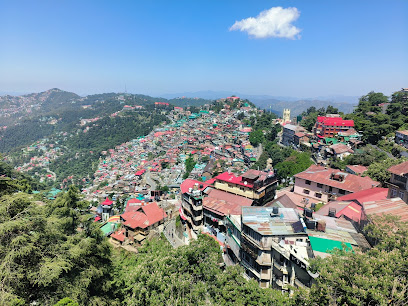
Ridge, Shimla
Experience the breathtaking views and rich cultural heritage at The Ridge, Shimla's iconic historical landmark and tourist attraction.
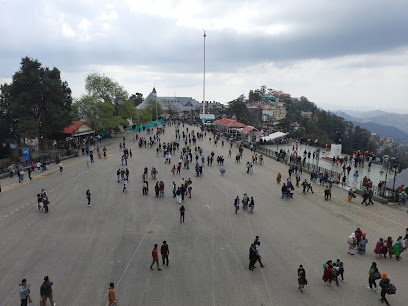
Viceregal Lodge
Explore the Viceregal Lodge in Shimla, a historical masterpiece surrounded by nature's beauty, offering insights into India's colonial history.

Himalayan Nature Park Kufri
Explore the Himalayan Nature Park Kufri, a wildlife sanctuary with stunning landscapes and diverse flora and fauna, perfect for nature lovers and families.

Kali Bari Temple, Shimla
Explore the divine beauty of Kali Bari Temple in Shimla, a serene Hindu temple offering spiritual solace amidst stunning Himalayan views.

Jakhu Ropeway Shimla
Discover the stunning vistas and spiritual allure of Jakhu Ropeway, a premier attraction in Shimla that offers a unique cable car experience.
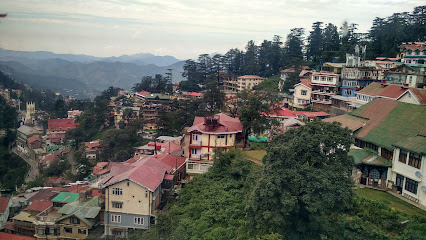
Army Heritage Museum
Explore the rich military history of India at the Army Heritage Museum in Shimla, where bravery and heritage come alive amid stunning Himalayan views.

Gaiety Heritage Cultural Complex Shimla
Discover the vibrant arts and rich heritage at the Gaiety Heritage Cultural Complex in Shimla, a cultural gem nestled in the hills.
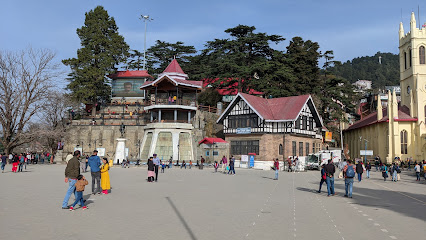
The Ridge
Explore the stunning Ridge of Shimla, a vibrant promenade offering breathtaking views, rich culture, and a lively atmosphere in the heart of Himachal Pradesh.

Cafe Simla Times : Cafe, Biergarten & Bar on the Mall Road Shimla ( Awarded Most Instagrammable Cafe of Himachal)
Experience the charm of Shimla at Café Simla Times, where delectable cuisine meets breathtaking views in a cozy atmosphere.
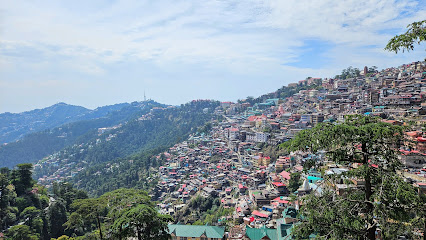
Lakkar bazar
Experience the vibrant culture and unique handicrafts at Lakkar Bazar, Shimla's iconic market nestled in the breathtaking Himalayan landscape.

Healing Heights
Discover the breathtaking beauty of Healing Heights in Shimla, a serene tourist attraction surrounded by lush landscapes and majestic mountain views.

Chadwick Falls
Discover the enchanting beauty of Chadwick Falls in Shimla, a serene escape surrounded by nature's splendor, perfect for relaxation and adventure.

Vaishno Devi Temple
Explore the divine beauty of Vaishno Devi Temple, a sacred Hindu pilgrimage destination nestled in the breathtaking hills of Himachal Pradesh.

Unmissable attractions to see
Yadavindra Gardens, Pinjore
Discover the tranquil beauty of Yadavindra Gardens in Pinjore, a Mughal-inspired oasis perfect for relaxation and exploration amidst stunning flora.

Shree Hanuman Temple, Jakhu
Explore the divine beauty and serene atmosphere of Shree Hanuman Temple in Jakhu, Shimla, a perfect blend of spirituality and breathtaking views.
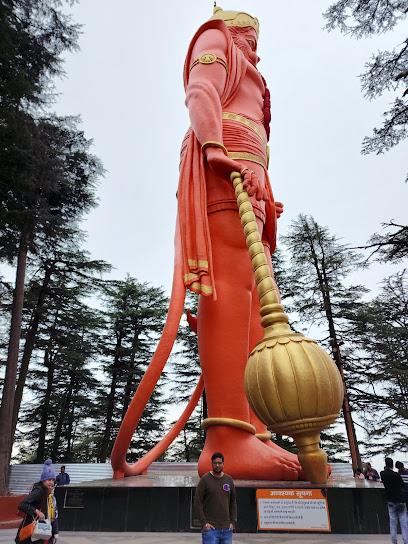
Christ Church, Shimla
Discover the serene beauty and historical significance of Christ Church, an architectural gem in the heart of Shimla, Himachal Pradesh.

Kali Bari Temple, Shimla
Discover the spiritual charm of Kali Bari Temple in Shimla, a serene retreat enveloped in natural beauty and rich cultural heritage.

Army Heritage Museum
Explore India's military legacy at the Army Heritage Museum in Shimla, showcasing the valor and history of the armed forces through engaging exhibits.

Gaiety Heritage Cultural Complex Shimla
Discover the vibrant cultural scene at Gaiety Heritage Cultural Complex in Shimla, where art and history come alive in a stunning Victorian setting.

Mall Rd
Explore the vibrant Mall Road in Shimla, where stunning mountain views meet delightful shopping and local cuisine in a charming hill station atmosphere.
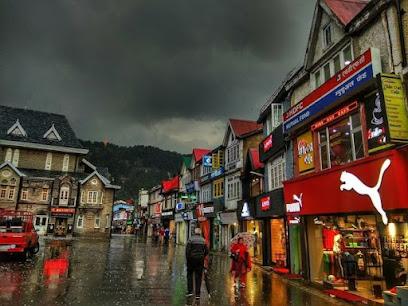
Green Valley View
Discover the serene beauty of Green Valley View in Himachal Pradesh, where majestic mountains meet lush valleys in a breathtaking landscape.

Shree Sankat Mochan Hanuman Mandir, Shimla
Explore the tranquil beauty and spiritual significance of Shree Sankat Mochan Hanuman Mandir in Shimla, a must-visit for every traveler.
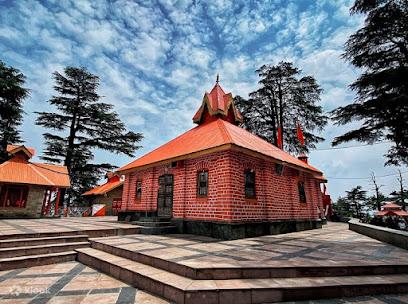
Himachal State Museum
Explore the cultural gems of Himachal Pradesh at Himachal State Museum, a must-visit tourist attraction in Shimla.

Victory Tunnel
Discover the historic Victory Tunnel, a colonial marvel in Shimla, offering a unique glimpse into the past amidst stunning natural landscapes.

Himalayan Bird Park
Explore the Himalayan Bird Park in Shimla, a serene wildlife haven featuring diverse bird species amidst stunning mountain landscapes.
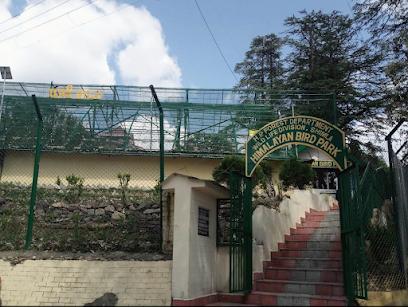
Rani Jhansi Park
Explore the tranquil beauty of Rani Jhansi Park in Shimla, an urban oasis perfect for relaxation, nature walks, and family outings.

Daulat Singh Park
Experience the natural beauty and tranquility of Daulat Singh Park, a must-visit tourist attraction in the heart of Shimla, Himachal Pradesh.

Shimla Water Catchment Wildlife Sanctuary
Explore the lush landscapes and diverse wildlife at Shimla Water Catchment Wildlife Sanctuary, a serene escape in Himachal Pradesh.

Essential places to dine
Indian Coffee House
Experience the charm of Shimla at Indian Coffee House, where delightful brews meet nostalgic ambiance amidst breathtaking mountain views.

Devicos Restaurant & D Lounge Bar
Experience delightful cuisine and stunning views at Devicos Restaurant & D Lounge Bar in Shimla - where tradition meets modern gastronomy.

Hills Edge Restaurant
Experience authentic Indian cuisine with breathtaking mountain views at Hills Edge Restaurant in Shimla.

Cafe Sol
Experience culinary bliss at Café Sol in Shimla – where delightful breakfasts meet stunning mountain views.

The Brew Estate
Experience exquisite craft beer and delightful cuisine at The Brew Estate in Shimla's picturesque Lakkar Bazar.

Cafe Simla Times : Cafe, Biergarten & Bar on the Mall Road Shimla ( Awarded Most Instagrammable Cafe of Himachal)
Discover Café Simla Times: A picturesque spot on Mall Road serving gourmet wood-fired pizzas and cocktails amidst stunning views in Shimla.

Sher E Punjab ( Regd.)
Experience authentic Punjabi flavors at Sher E Punjab in Shimla—where delicious food meets warm hospitality amidst stunning Himalayan views.

Goofa Ashiana Restaurant
Experience delightful dining at Goofa Ashiana Restaurant in Shimla, where local flavors meet global cuisine amidst stunning hilltop views.

Himachali Rasoi
Experience authentic North Eastern Indian vegetarian cuisine at Himachali Rasoi in Shimla's scenic heart.

45 The Central
Experience exquisite flavors at 45 The Central in Shimla—where Indian cuisine meets global culinary traditions in a picturesque setting.

Wake and Bake Cafe
Discover the charm of Wake and Bake Cafe in Shimla—your perfect spot for delicious breakfasts and aromatic coffee amidst stunning hilltop views.
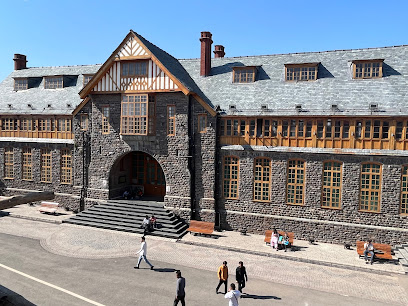
Hide Out Cafe
Experience delectable cuisine amidst scenic views at Hide Out Cafe - your go-to spot in Shimla for breakfast, coffee, and more.

Eighteen71 Cookhouse & Bar (Indian & Oriental Fine Dining Restaurant in Shimla)
Discover exquisite Indian and Oriental cuisine at Eighteen71 Cookhouse & Bar in Shimla - where flavor meets elegance.

Cafe Under Tree
Discover tranquility at Cafe Under Tree, Shimla's charming vegetarian cafe nestled amidst nature's beauty with delightful breakfast options.

The Great Urban Dhaba
Experience authentic Indian flavors at The Great Urban Dhaba in Shimla - where delicious cuisine meets breathtaking Himalayan views.

Markets, malls and hidden boutiques
City Centre Mall Shimla Modern
Experience shopping bliss at City Centre Mall Shimla, where modern retail meets stunning Himalayan views.

TRENDS
Explore the latest fashion trends at Trends, Shimla’s premier clothing store, offering a diverse range of casual wear in a modern shopping environment.

PUMA Store
Explore trendy sportswear and accessories at the PUMA Store in Shimla, where fashion meets functionality in the heart of the Himalayas.

Himachal Emporium
Explore the rich craft heritage of Himachal Pradesh at Himachal Emporium, a premier destination for traditional handicrafts and unique souvenirs.

Hamleys
Explore Hamleys in Shimla for a magical toy shopping experience filled with joy, nostalgia, and endless fun for all ages.

Souvenirs
Discover a world of unique gifts and traditional crafts at Souvenirs in Shimla's lively Lakkar Bazar.

Wildcraft
Explore the majestic outdoors of Shimla with high-quality gear from Wildcraft, the leading outdoor clothing and equipment shop on Mall Road.

Mother Choice
Explore the magic of childhood at Mother Choice, Shimla's beloved toy store, offering a wide variety of toys and children's clothing for every little adventurer.
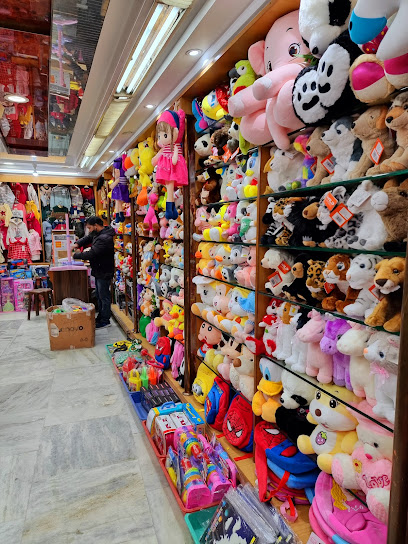
Jockey Exclusive Store
Discover the essence of fashion at Jockey Exclusive Store in Shimla, offering stylish clothing for men, women, and children in a prime shopping location.

Dewanchand Atmaram
Discover unique clothing at Dewanchand Atmaram, a vibrant clothing store in the heart of Shimla's Middle Bazar, where tradition meets contemporary fashion.

Maria Brothers
Discover the enchanting blend of literature and antiques at Maria Brothers, a must-visit gem on Shimla's Mall Road.

Emerge Shimla
Discover a unique shopping experience at Emerge Shimla, featuring trendy clothing, bags, toys, and electronics in the heart of the Himalayas.

Happy Brothers Gift Emporium
Discover unique souvenirs and handcrafted treasures at Happy Brothers Gift Emporium in the heart of Shimla, Himachal Pradesh.

Levi's Exclusive Store
Shop at Levi's Exclusive Store in Shimla for trendy denim and casual wear, perfectly blending style with the picturesque charm of the Himalayas.

Simla Shawls by FW
Explore the finest collection of traditional shawls at Simla Shawls by FW, where local craftsmanship meets modern elegance in Shimla.

Essential bars & hidden hideouts
Devicos Restaurant & D Lounge Bar
Discover the flavors of Shimla at Devicos Restaurant & D Lounge Bar, a perfect blend of local cuisine and international delicacies.

The Brew Estate
Discover exquisite craft beers and a delightful dining experience at The Brew Estate, Shimla's premier brewpub, set against stunning hill views.

Cafe Simla Times : Cafe, Biergarten & Bar on the Mall Road Shimla ( Awarded Most Instagrammable Cafe of Himachal)
Experience the flavors of Himachal at Cafe Simla Times, the most Instagrammable cafe in Shimla, where culinary delight meets stunning mountain views.

Scandal Delights Cafe Bar Dine In
Discover the taste of Shimla at Scandal Delights Cafe Bar Dine In, where local flavors meet a cozy ambiance for an unforgettable dining experience.

Pyramid Microbrewery | Café | Lounge | Bar, Shimla
Experience the best of Shimla at Pyramid Microbrewery, where craft beer meets delectable cuisine in a vibrant setting.

Shimla Brewing Company- Best Microbrewery & Nightclub in Shimla
Experience the best of Shimla's nightlife and craft beer culture at Shimla Brewing Company, a premier microbrewery and nightclub.

Rendezvous Bar & Restaurant
Experience the culinary delights of Rendezvous Bar & Restaurant in Shimla, where grilled specialties meet stunning mountain views.

Himani Cafe & Bar
Discover a vibrant dining experience at Himani Cafe & Bar, where delectable grilled dishes meet stunning hill views in the heart of Shimla.

The Crimson Bar & Garden Restaurant
Experience the perfect blend of culinary delight and natural beauty at The Crimson Bar & Garden Restaurant in Shimla.

SkyBar Shimla - Cocktails & Shisha- Best Herbal Hookah Rooftop Lounge in Shimla
Experience the best of Shimla at SkyBar, a premier rooftop lounge known for its cocktails, shisha, and stunning hilltop views.

La Glace Bar and Restaurant
Discover the vibrant flavors of Shimla at La Glace Bar and Restaurant, where culinary excellence meets a lively atmosphere.

Topaz Restro Bar
Discover the vibrant Topaz Restro Bar in Shimla, offering stunning views, an extensive drink menu, and a lively atmosphere perfect for relaxation.

Sixty-nine 69 Lounge Bar
Discover the perfect blend of relaxation and excitement at Sixty-nine 69 Lounge Bar, your ultimate destination for nightlife in Shimla.

SPLASH RESTAURANT AND BAR MALL
Discover the vibrant flavors and enchanting ambiance at Splash Restaurant and Bar Mall in Shimla, a perfect retreat for every traveler.

Lucky Bar & Restaurant
Discover the culinary delights of Lucky Bar & Restaurant in Shimla, a perfect blend of local flavors and a welcoming atmosphere amidst the stunning landscapes.

Local Phrases
-
- Helloनमस्ते
[Namaste] - Goodbyeअलविदा
[Alvida] - Yesहां
[Haan] - Noनहीं
[Nahi] - Please/You're welcomeकृपया/स्वागत है
[Kripya/Swagat hai] - Thank youधन्यवाद
[Dhanyavad] - Excuse me/Sorryक्षमा करें/माफ़ कीजिये
[Kshama karein/Maaf kijiye] - How are you?आप कैसे हैं?
[Aap kaise hain?] - Fine. And you?ठीक हूँ। आप?
[Theek hoon. Aap?] - Do you speak English?क्या आप अंग्रेज़ी बोलते हैं?
[Kya aap angrezi bolte hain?] - I don't understandमुझे समझ नहीं आया
[Mujhe samajh nahi aaya]
- Helloनमस्ते
-
- I'd like to see the menu, pleaseकृपया मेन्यू दिखाएं
[Kripya menu dikhayein] - I don't eat meatमैं मांस नहीं खाता/खाती
[Main maans nahi khaata/khaati] - Cheers!चियर्स!
[Cheers!] - I would like to pay, pleaseकृपया मैं भुगतान करना चाहूँ
[Kripya main bhugtan karna chaahoon]
- I'd like to see the menu, pleaseकृपया मेन्यू दिखाएं
-
- Help!बचाओ!
[Bachao!] - Go away!चले जाओ!
[Chale jao!] - Call the Police!पुलिस को बुलाओ!
[Police ko bulao!] - Call a doctor!डॉक्टर को बुलाओ!
[Doctor ko bulao!] - I'm lostमैं खो गया/गई हूँ
[Main kho gaya/gayi hoon] - I'm illमुझे बीमारी है
[Mujhe bimari hai]
- Help!बचाओ!
-
- I'd like to buy...मैं खरीदना चाहूँगा/चाहूँगी
[Main khareedna chaahunga/chaahungi] - I'm just lookingमैं सिर्फ देख रहा/रही हूँ
[Main sirf dekh raha/rahi hoon] - How much is it?यह कितने का है?
[Yeh kitne ka hai?] - That's too expensiveयह बहुत महंगा है
[Yeh bahut mehnga hai] - Can you lower the price?क्या आप कीमत कम कर सकते हैं?
[Kya aap keemat kam kar sakte hain?]
- I'd like to buy...मैं खरीदना चाहूँगा/चाहूँगी
-
- What time is it?अभी कितने बजे हैं?
[Abhi kitne baje hain?] - It's one o'clockएक बजे हैं
[Ek baje hain] - Half past (10)दस बजे बरह मिनट
[Das baje barah minute] - Morningसुबह
[Subah] - Afternoonदोपहर
[Dopahar] - Eveningशाम
[Shaam] - Yesterdayकल
[Kal] - Todayआज
[Aaj] - Tomorrowकल
[Kal] - 1एक
[Ek] - 2दो
[Do] - 3तीन
[Teen] - 4चार
[Char] - 5पाँच
[Paanch] - 6छह
[Chhe] - 7सात
[Saath] - 8आठ
[Aath] - 9नौ
[Nau] - 10दस
[Das]
- What time is it?अभी कितने बजे हैं?
-
- Where's a/the...?यहाँ...कहाँ है?
[Yahaan...kahaan hai?] - What's the address?पता क्या है?
[Pata kya hai?] - Can you show me (on the map)?क्या आप मुझे दिखा सकते हैं?
[Kya aap mujhe dikha sakte hain?] - When's the next (bus)?अगली बस कब है?
[Agli bus kab hai?] - A ticket (to ....)एक टिकट (...के लिए)
[Ek ticket (...ke liye)]
- Where's a/the...?यहाँ...कहाँ है?
History of Shimla
-
Shimla, nestled in the foothills of the Himalayas, was originally a small village named Shyamala, derived from the Hindu goddess Kali. It remained relatively unknown until the early 19th century when the British East India Company began to explore the area for its cool and pleasant climate.
-
In 1819, the British discovered Shimla and quickly realized its potential as a summer retreat from the sweltering heat of the Indian plains. By 1822, the first British house in Shimla, Kennedy House, was built by Major Charles Kennedy. This marked the beginning of Shimla's transformation into a bustling hill station.
-
In 1864, Shimla was officially declared the summer capital of British India. This decision was partly due to its strategic location and the refreshing climate, which provided a respite from the intense heat of the Indian summer. The city became the administrative hub during the summer months, hosting the government and various officials.
-
Shimla is renowned for its colonial architecture, much of which remains intact today. The Viceregal Lodge, constructed in 1888, served as the residence of the British Viceroy of India. The Christ Church, built in 1857, is one of the oldest churches in North India and a prominent landmark. These buildings, along with numerous others, showcase the city's colonial heritage.
-
Shimla played a significant role in India's struggle for independence. The city was the site of several important meetings and agreements, including the Shimla Conference of 1945, where British officials and Indian leaders discussed the future of India. The 1947 Partition Agreement was also negotiated in Shimla, marking a pivotal moment in Indian history.
-
After India gained independence in 1947, Shimla continued to thrive as a popular tourist destination. It became the capital of the Indian state of Himachal Pradesh in 1971. The city has since evolved, balancing its historical significance with modern amenities, making it a sought-after destination for both domestic and international tourists.
-
Shimla is not just a historical landmark but also a cultural hub. The city hosts various festivals and events, such as the Shimla Summer Festival, which showcases local music, dance, and crafts. The blend of colonial and local Himachali culture is evident in the city's daily life, cuisine, and traditional attire.
Shimla Essentials
-
Shimla is well-connected by road, rail, and air. The nearest airport is Jubbarhatti, approximately 23 kilometers from Shimla, offering limited flights mainly from Delhi. Alternatively, Chandigarh Airport, about 120 kilometers away, offers better connectivity. Shimla is accessible by the Kalka-Shimla Railway, a UNESCO World Heritage Site, which provides a scenic journey through the hills. By road, Shimla is connected via National Highway 5, with regular buses and taxis available from Delhi, Chandigarh, and other nearby cities.
-
In Shimla, local transport includes taxis, auto-rickshaws, and buses. The Himachal Pradesh Tourism Development Corporation (HPTDC) operates reliable bus services within the city and to nearby attractions. Private taxis are available for hire, but it's advisable to negotiate fares beforehand. Walking is also a popular way to explore the Mall Road and Ridge area, which are pedestrian-friendly zones.
-
The official currency in Shimla is the Indian Rupee (INR). Credit and debit cards are widely accepted in most hotels, restaurants, and shops. ATMs are easily available throughout the city. However, it's wise to carry some cash, especially when visiting remote areas or shopping in local markets where card facilities may not be available.
-
Shimla is generally a safe destination for tourists. However, it's important to exercise standard precautions. Avoid walking alone in secluded areas after dark and keep an eye on your belongings in crowded places. While Shimla does not have specific high-crime areas targeting tourists, always stay vigilant and use common sense. The Lower Bazaar area can be crowded and chaotic, requiring extra caution.
-
In case of an emergency, dial 112 for immediate assistance. Shimla has several hospitals and clinics, including Indira Gandhi Medical College and Hospital. It is advisable to have travel insurance that covers medical emergencies. For minor health issues, numerous pharmacies are available in the city where over-the-counter medications can be purchased.
-
Fashion: Do dress modestly, especially when visiting religious sites. Avoid overly revealing clothing. Religion: Do respect local customs and remove your shoes before entering temples. Public Transport: Do be courteous and offer your seat to elderly passengers. Don't eat or drink on public transport. Greetings: Do greet people with a 'Namaste' and a smile. Eating & Drinking: Do try local Himachali cuisine and accept food offerings graciously. Don't refuse hospitality, as it is considered impolite.
-
To experience Shimla like a local, visit the Lakkar Bazaar for wooden handicrafts and souvenirs. Engage with locals to learn about the city's history and culture. Don't miss a walk on the Mall Road and Ridge, especially in the evening when the area comes alive with local activities. For a unique experience, take a ride on the Shimla-Kalka toy train, offering stunning views of the surrounding hills.
Trending Landmark in Shimla
-
Christ Church, Shimla
-
Shri Hanuman Mandir Jakhoo
-
Ridge, Shimla
-
Viceregal Lodge
-
Himalayan Nature Park Kufri
-
Kali Bari Temple, Shimla
-
Jakhu Ropeway Shimla
-
Army Heritage Museum
-
Gaiety Heritage Cultural Complex Shimla
-
The Ridge
-
Cafe Simla Times : Cafe, Biergarten & Bar on the Mall Road Shimla ( Awarded Most Instagrammable Cafe of Himachal)
-
Lakkar bazar
-
Healing Heights
-
Chadwick Falls
-
Vaishno Devi Temple
Nearby Cities to Shimla
-
Things To Do in Manali
-
Things To Do in Rishikesh
-
Things To Do in Amritsar
-
Things To Do in Delhi
-
Things To Do in Lahore
-
Things To Do in Jammu
-
Things To Do in Sialkot
-
Things To Do in Gujranwala
-
Things To Do in Leh
-
Things To Do in Faisalabad
-
Things To Do in Agra
-
Things To Do in Murree
-
Things To Do in Rawalpindi
-
Things To Do in Islamabad
-
Things To Do in Jaipur

















